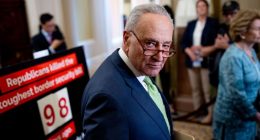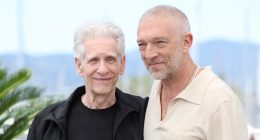
Mahalo for supporting Honolulu Star-Advertiser. Enjoy this free story!
Hawaii is expected to see 8.86 million visitors this year, followed by annual increases until pre-pandemic record numbers are nearly reached in 2024, when the islands are forecast to see 9.9 million tourists.
At a joint hearing Tuesday of the Senate Ways and Means Committee and House Finance Committee, state economist Eugene Tian projected a rebound of the visitor industry on par with the eve of the pandemic in 2019, when more than 10 million tourists spent $17.8 million in the local economy.
“We don’t see that visitor arrivals will recover … until 2025,” Tian said.
Tian said he expects that “2022 will be a major (economic) recovery, mainly from international tourism.”
But House Finance Committee Chairwoman Sylvia Luke (D, Punchbowl-Pauoa-Nuuanu) told the Honolulu Star-Advertiser that the latest tourism projections reflect some pre-pandemic forecasts that Hawaii could see as many as 12 million annual visitors one day from both the mainland and foreign countries.
Tian’s forecast Tuesday puts even more pressure on legislators in this upcoming legislative session to come up with specific plans to control access at state-run parks and beaches, such as Diamond Head and parts of Oahu’s North Shore, by possibly charging new tourism user fees and limiting parking at popular state parks and beaches following the model at Haena State Park, which reinvented itself following the 2018 devastating floods and landslides on Kauai’s North Shore.
Tuesday’s forecast of nearly 10 million visitors in 2024 “was something that definitely caught my attention,” Luke said following the briefing. “Apparently, in two years they are projecting we will again have 10 million. We need to prepare for that now. It’s the reason why we need some type of managed tourism plan now. … We have been using the Haena model as a key element in doing parks management throughout the state: restriction and access to certain areas, reservations, user fees, especially for tourists; restricting access of vehicles. Haena is a model of success, and we can mirror that in other parts, including Iao Valley (on Maui).
“I don’t think we can wait two years,” Luke said. “By that time tourism numbers will have jumped close to 10 million. We need to make that investment now.”
Tian and Carl Bonham, executive director of the University of Hawaii Economic Research Organization, presented some concerning data but outlined a generally optimistic economic recovery clouded by plenty of unknowns, especially with uncertainty over the omicron variant and lingering questions about when international travelers will return in large numbers.
“The big takeaway from all of this is the pandemic continues to drive the forecast, particularly in the near term,” Bonham said. “There’s a tremendous amount of uncertainty, and almost all of it is coming from the omicron variant.”
“We’re in a much, much better place than we were a year ago,” Bonham said. “Other than the COVID cases, I think the economic information has been very encouraging.”
The local, nontourism economy has reached “full recovery,” at a 93.4% recovery rate, but the tourism economy still lags at only 78.5%, Tian said.
Although tourism has yet to fully recover, Tian said, “tourism is the sector driving economic growth.”
Some 6.8 million visitors are expected to have arrived in 2021, once the December numbers are calculated, Tian said.
Once again, during the era of COVID-19, the majority will come from the mainland and are also driving hotel bookings, Tian said.
Between May and November, the number of mainland visitors was up 110.4% compared with 2019’s last booming year for tourism — while international travelers for the same period represented only 7.6% of their 2019 levels.
In other forecasts presented Tuesday:
>> “Construction will be the star industry for the next few years … especially residential construction,” Tian said.
“Construction has been the bright spot in the economy,” Bonham later added.
Luke said she is interested in more details about residential construction, specifically what’s driving it and whether homeowners who are now working from home are renovating.
“That was very interesting and a surprise that both economists pointed out that there was an uptick in residential permits, and they stressed it was on the residential side and not the commercial side,” Luke said. “But they stopped short. … Was it a combination of stimulus funds, unemployment funds or people transitioning from going into work? We need to figure out what’s driving it. But it’s a positive sign.”
>> The civilian unemployment rate is expected to drop from 7.5% in 2021 to 6% in 2022, to 5.2% in 2023 and to 4.5% in 2024.
>> Sales of single-family homes and condos are “booming” with double-digit increases on every island, Tian said.
Most of the sales — 60% — are to local buyers.
But sales to foreign buyers average prices of $2.2 million, compared with $1.58 million to mainland buyers and only $877,000 for local buyers.
>> At the start of the pandemic nearly two years ago, 60% of businesses had closed permanently or temporarily. By March 2021, 92% were either partially or fully reopened, and only 1.8% expected to close permanently, Tian said.
>> Hawaii retail sales saw double-digit increases every month for the first three quarters of 2021.
>> There were 1,184 bankruptcy filings in 2021, down 22.3% from 2020.
But there are continuing reasons for caution.
>> With a 6% seasonally adjusted unemployment rate, Hawaii ranks sixth highest in the nation, and the pandemic has led to the loss of over 91,500 payroll jobs, with 55,500 of them on Oahu, Tian said.
“We still have 38,000 people still looking for jobs … double the number in a normal year,” he said.
The 18,000 positions that remain unfilled represent the highest number since 2019 and may be hampered by applicants who are not qualified, Tian said.
>> The effects of federal COVID-19 aid are still moving through the economy, so Bonham said, “Most of what we’re seeing in the data suggests that we’re sort of dealing with an artificially buoyant economy, and a lot of the things that are buoying it are going away or have already gone away, so there’s good reason for caution.”
Source: Star








